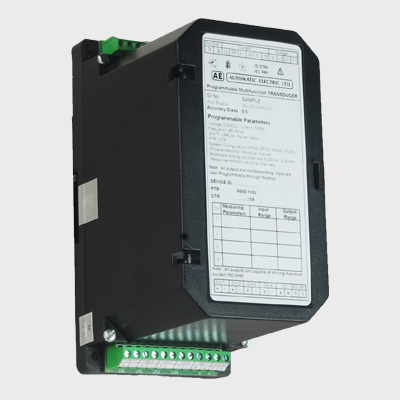
| Business Type | Manufacturer, Exporter, Supplier, Retailer, Wholesaler |
| Country of Origin | India |
| Application | Industrial Use |
| Control | Computer Monitoring |
| Location | Worldwide |
The PMT-9 Multifunction Programmable Transducer measures the several variables of an electric power system and processes them to produce 4 analog output signals. 2 digital output signals are available for signaling the limits. The limits of the outputs can be set by individual measurand or logically combine up to three measurand. The principle of measuring is Dedicated DSP Controller for best calculation of RMS values and Power.
The PMT-9 is equipped with USB serial port interface through which using the corresponding software one can connect, program, or access and execute useful ancillary functions. The ancillary functions include a power system check, provision for displaying the measured variably on a PC monitor, the simulation of the outputs for test purposes.
The PMT-9 is also equipped with a RS 485 bus interface (MODBUS®). The RS 485 interface enables the user to determine the number of variables to be supervised (up to the maximum available). The levels of all internal power/ energy meters that have been configured can also be viewed. Provision is made for programming the PMT-9 via the bus. A standard EIA 485 interface can be used, but there is no dummy
Simultaneous measurement of several variables of a heavy-current power system / Full supervision of an asymmetrically loaded four wire power system, rated current 1 to 6 A, rated voltage 57 to 400V (phase-to-n€ utral) or 100 to 693 V (phase-to-phase)For all heavy-current power system variables.
©2023. Automatic Electric. All Rights Reserved.